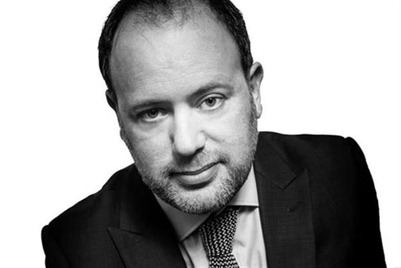
Discussions with many potential commercial partners still centre around logo positioning, banner displays and broadcast reach, and not around how the marathon can amplify an existing campaign or how new content can be created on the back of the race.
More than 50,000 runners will hit the streets of Singapore this weekend for the annual event, which is sponsored by Standard Chartered.
And with thousands more turning out to support them, watching on TV and following online, Chris Robb, MD of event organizer Spectrum Worldwide, said the potential to engage with consumers and participants was now greater than ever before—provided brands looked beyond traditional approaches.
“I’m surprised still that quite often my discussions with a brand are around where will my logo go, how many signboards do I get,” he said. “I had a conversation with a partner the other week which just kept coming back to ‘Where else can you put my logo?' Or ‘Can I have some more banners?’ This was a consumer product so we suggested creating some content and competitions, but it just kept coming back to branding. For me, branding should be a given.
“Quite often this is because a report goes back to the board detailing the branding value, the PR and the broadcast time they got. That’s easier to measure than how a piece of content led to sales. That’s the ongoing challenge for this industry.”
Robb is seeing signs of improvement and namechecks a host of this year’s partners that have devised tailor-made campaigns, such as Swisse Vitamins, which is using the event as a launch pad into Southeast Asia, first-time partner Land Rover, which is bring its terapod ramp to the race, and GrabTaxi, which has branded 200 cars and has special-offers for participants.
“As rights holders we have the responsibility to help this process as well,” he added. “Too often it’s just a case of taking the cheque and handing out the rights. It needs to be a partnership. The best way to work together is to create something bespoke which uses the event to amplify an activation, instead of it being a one-off event.”
 Chris Robb, MD, Spectrum Worldwide |
From the marathon’s marketing perspective, attention and cash is increasingly being ploughed into digital and social channels.
This year it launched the world’s first digital queue for a mass-participation sporting event, allowing runners to get a head start in registration via social media. The more retweets, comments and likes users get with marathon-related content, the closer they got to the front of the digital queue. Winners bagged free registration slots and front-row positions on the starting line.
Such projects have contributed to a 20 percent shift away from print and other traditional media spending, and Robb forecasts this to accelerate in the coming years.
Key to the digital strategy is creating content around the “50,000 unique stories” from every runner, and ensuring the marketing strategy spans the whole year, not just the six months leading up to the race.
“We’ve still got some way to go to get to the point where our campaign is continuing throughout the year—and that is certainly the case for the industry generally," he said. "Overall, the industry has missed that opportunity a little bit so far.
“Too many spend six months of the year not speaking to people, but there is so much we can do around content on an ongoing basis. We’ve come along way, but we can do much more, especially around personal communications and conversations."


+(900+x+600+px)+(3).png&h=334&w=500&q=100&v=20250320&c=1)
+(900+x+600+px).jpg&h=334&w=500&q=100&v=20250320&c=1)
.jpg&h=334&w=500&q=100&v=20250320&c=1)


.jpg&h=334&w=500&q=100&v=20250320&c=1)
+(900+x+600+px).png&h=334&w=500&q=100&v=20250320&c=1)

+(900+x+600+px)+(1).png&h=334&w=500&q=100&v=20250320&c=1)





.jpg&h=268&w=401&q=100&v=20250320&c=1)


